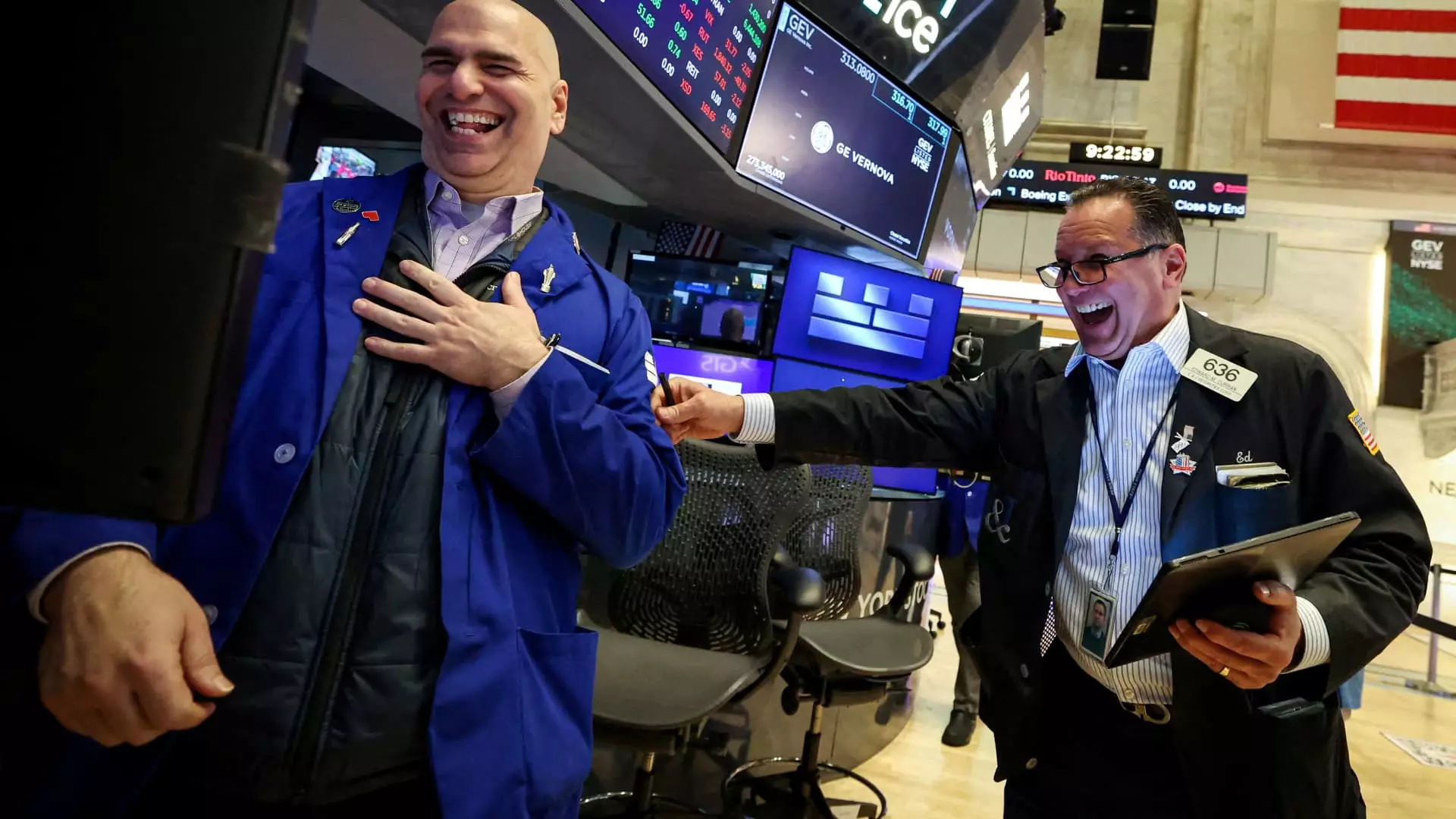In the ever-evolving landscape of the stock market, short sellers find themselves in a precarious position. These individuals or institutions bet against company stocks, hoping to profit from price declines. However, the recent chaotic conditions have highlighted the inherent risks of this tactic. Imagine watching the stock prices soar unexpectedly, all while you’ve committed your resources to betting against them. That’s precisely what many short sellers faced in a turbulent two-day market rally, revealing not just the dangers of short selling but also the emotional turmoil that often accompanies this high-stakes game.
The current market scenario is not just a minor mishap; it’s representative of a systemic problem in speculative trading strategies that can turn toxic overnight. When hedge funds ramp up their bearish wagers, as reported by Goldman Sachs, they set the stage for what one might call a financial minefield. The intricacies of short selling can quickly morph into a short squeeze—an event where the asset price rebounds sharply, forcing those who shorted the stock to repurchase shares at inflated prices to cover their positions and minimize losses. It’s a vicious cycle that typically spells disaster for many hedge fund managers.
Market Manipulation Underlying Short Squeeze
Short squeezes, while a legitimate market phenomenon, can often seem like an orchestrated act of manipulation, distorting the market’s natural ebb and flow. When positions are overly concentrated on one side of the market, such as in case of heightened short-selling, a minor positive trigger can unleash an explosion of buying activity. In recent days, nothing substantial changed in the fundamental economic landscape—no new trade agreements or policy decisions emerged—but rather a simple backtracking of comments from President Trump ignited a massive buying spree. This is the heavyweight of market behavior, throwing any notion of rational trading into a spiral of frenzy.
The remarkable leap in stock prices—the Dow Jones surging over 2,000 points in two days—is a clear signal that the dynamics of trader psychology are at play. Traders are often shaped not by rational decision-making but by panic and herd behavior. In a time of uncertainty, the slightest hint of bullish sentiment can send stocks soaring, leading to rapid, volatile movements that can bewilder even seasoned investors.
Skepticism Beneath the Rally
Amid these dizzying heights, skepticism lingers like a shadow. While traders enthusiastically celebrate the short-covering frenzy, many analysts, including John Flood from Goldman Sachs, questioned the robustness of this rally. The very mechanism driving the rise—the forced buying of borrowed shares—suggests that this upward movement could lack genuine conviction. Hedge funds have yet to pivot from short-covering to actively accumulating long positions, indicating that the rally may not be built on a solid foundation.
Flood’s concern speaks volumes about investor sentiment. An authentic market rally typically relies on sustained buying interest from a diverse array of investors, not just those forced to react defensively. This lack of stability in buying patterns creates an unsettling atmosphere, where investors could be left standing at the edge of a cliff, awaiting a market correction.
The Role of Fear in Investing
At the heart of this phenomenon lies an age-old truth about investing: fear and panic often drive better returns than fundamental analysis or diligent strategy. As investors witness the unpredictable nature of price movements tied to short-selling gambits, one cannot help but question the integrity of fundamental valuations. In a climate where fear dominates decision-making, it raises the question of whether we’ve moved away from a rational market to one fueled by emotional responses.
The deluge of ups and downs reminds us that the stock market is not merely a battleground for financial strategies but a psychological playground, where emotions frequently eclipse reason. Thus, we find ourselves in a cycle perpetuated by fear, greed, and speculation, gripped by the specter of volatility.
The rally driven by short-covering brings a mixed bag of excitement and trepidation that illuminates the instinctual nature of market interactions. As traders ride this wave of uncertainty, the fundamental view must be reconsidered amidst the whirlwind, and the hint of pending doom for short sellers remains palpable. While quick profits may be tempting, the long-term strategy must remain grounded in solid fundamentals rather than ephemeral sentiment.

